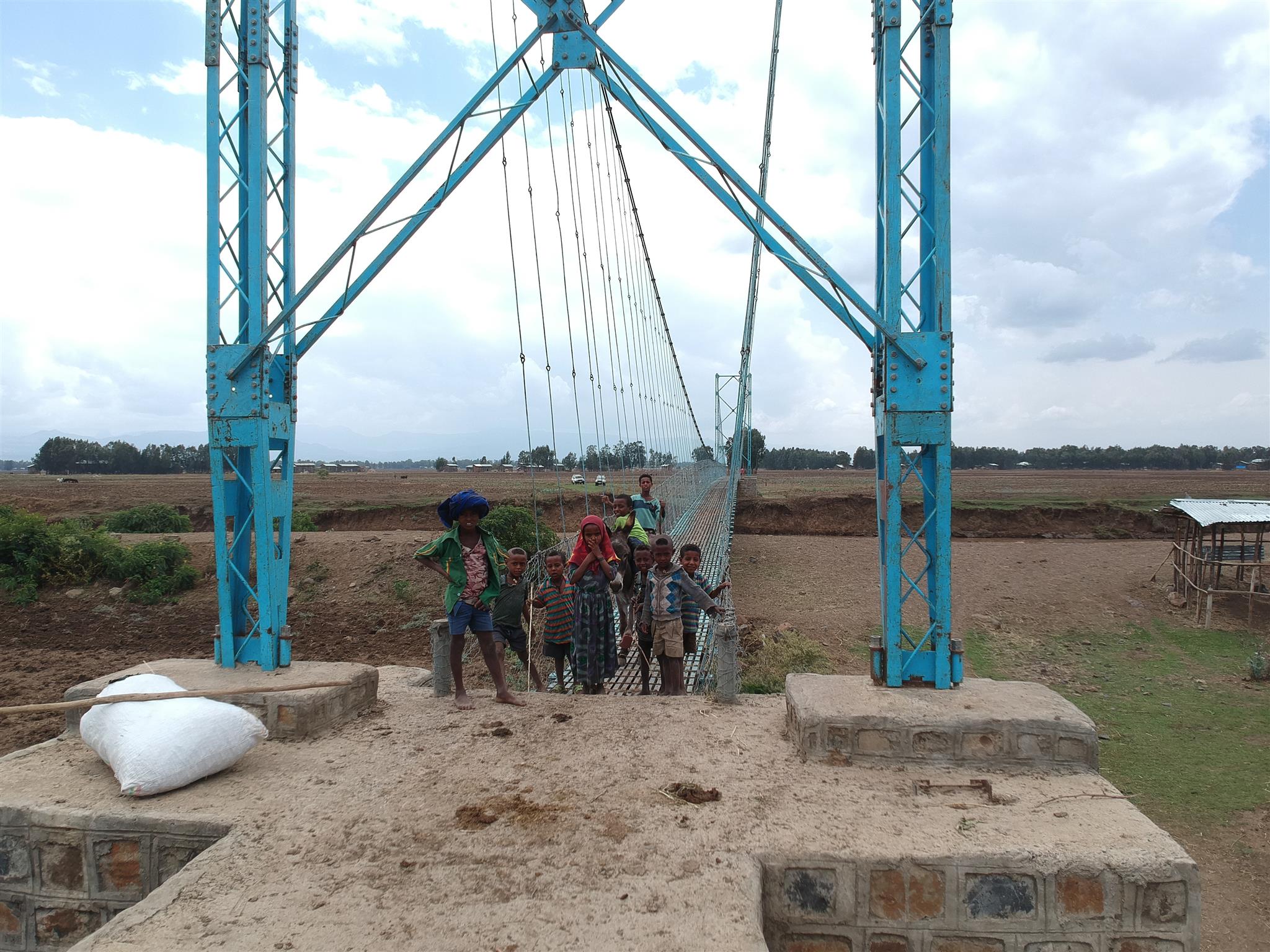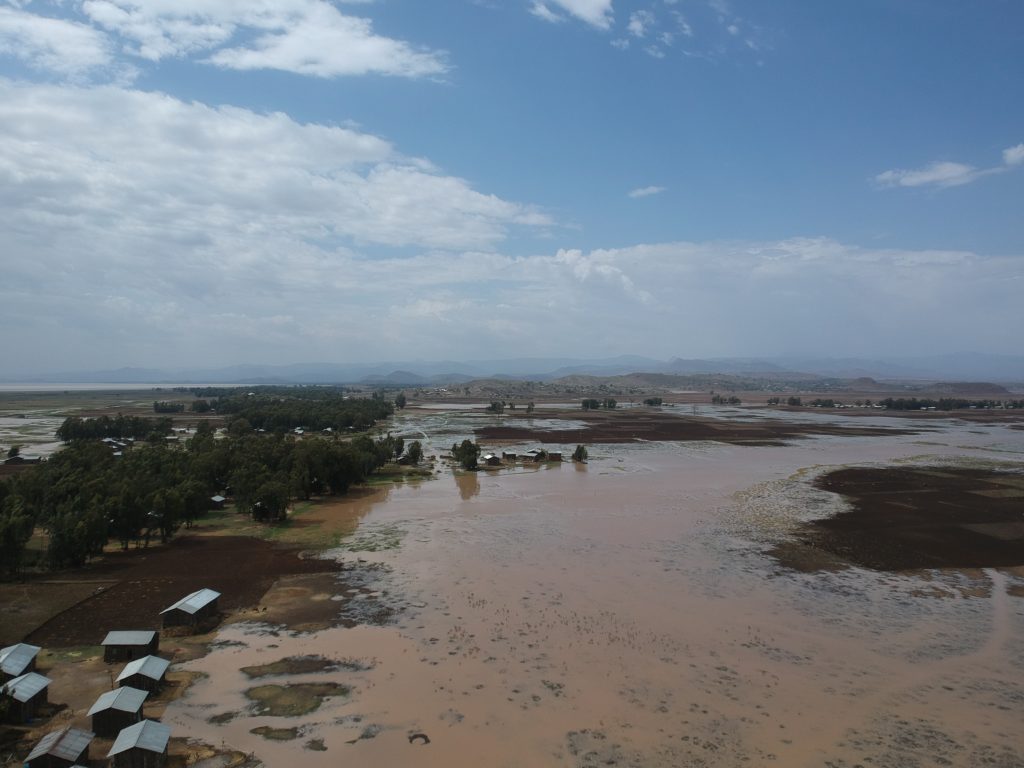
Until recently, annual flooding in Ethiopia’s rural districts of Libo Kemkem and Amhara disrupted more than 45,000 lives each year – hindering people from success, stability, and well-being. Between July and November’s rainy season, the Rib River overflowed into local communities. The impact was huge — families were forced to leave their homes, farms, and livelihoods. Many schools had no choice but to close, an obstacle for children’s education.
Working with grantee World Vision, the community took action. With funding from Helmsley, in 2017 World Vision implemented a plan to reduce economic damage from river floods; including building a flood-mitigating dike and other necessary infrastructure. The dike enables people to live more stably without the constant worry of displacement. A new suspension bridge across the Rib also allows for easier travel and saves people time, money, and energy. Before, community members could walk half a day to attend church or visit city hall.
According to Tewodros Abate, the project manager involved since day one, working closely with the entire community is key and is done through World Vision’s Community Care Coalitions (CCCs). CCCs include representatives from government, schools, health centers, and religious leaders. Together, the CCCs discuss how issues such as flooding impact lives and propose ideas for improvements.
“It is essential to engage the community and ensure they have a hand in planning and preparedness,” Tewodros said of the flood mitigation project. “CCCs are essential to planning and mobilizing during projects like this so we can receive input from all different community members.”
World Vision uses a holistic approach that goes beyond building necessary infrastructure, often integrating with education and economic development programs. Empowering communities – and especially young people – is a focus through job opportunities, clean water and sanitation practices, and improved agriculture techniques. The reassurance of future flood reduction is complemented by other efforts to build long-term resilience with the community.
A second Helmsley grant to World Vision Ethiopia builds on these successes. The additional funding will strengthen and sustain flood mitigation structures. An additional bridge will be built to further expand economic benefits and healthcare access. Community members will receive training in proper maintenance and operation of the dike, disaster risk reduction, and natural resource management.
Otto Farkas of World Vision shared that, “This was a unique project for us, and it would not have happened without Helmsley who saw the need when they visited. This is a rural region that may not have been prioritized otherwise, and hopefully its success can inspire others.”

